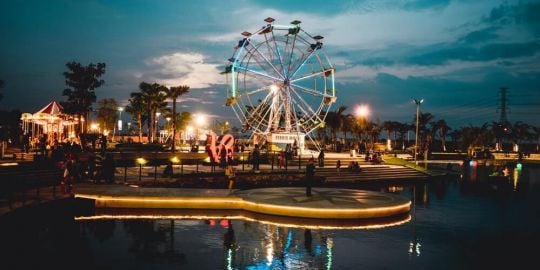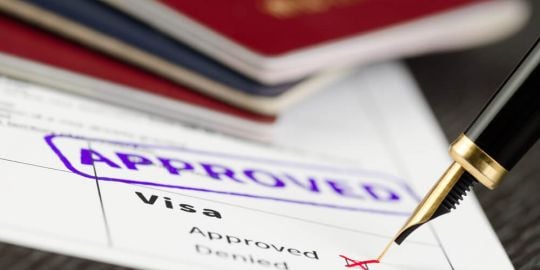5 misconceptions about Puerto Rico
My new home, la Isla del Encanto, the Island of Enchantment--also known as Puerto Rico, is possibly one of the most misunderstood places in the world--even for puertorriqueños. I thought I'd clear up some of the biggest myths or misconceptions:
1. Puerto Rico is a country/ Puerto Rico is a state.
Neither. It is technically a Commonwealth, or in Spanish, Estado Libre Asociado (Free Associated State). It has been an eternal colony since Christopher Columbus and the Spanish arrived there in 1943. The political status of Puerto Rico, with very good reason, is one of the most confusing things about the island. Puerto Rico competes separately in the Olympics. The US Postal Service considers shipments to Puerto Rico as domestic. FedEx and UPS say it's international. They have their own flag, language, national anthem, cultural background, and history. Yet, calling a Puerto Rican phone number is considered a domestic call, their education system falls under United States Standards, and they use the US Dollar as their currency (But then again, so do the countries of Panamá, El Salvador, and Ecuador).
Not to mention, Puerto Ricans feel very conflicted about their status, and the answer you will get really depends on the person's political persuasion. Heck, even the internet can't even make up its mind; sites like Hulu, Pandora, and Netflix all have different policies on whether internet users in PR can access their content. The same goes for shipping to Puerto Rico, or having to fill out forms online. Some places list Puerto Rico as another country, and others list it under the United States as a State.
My opinion: For all intents and purposes, Puerto Rico is like a different country to me. Yes, they have stores like Best Buy and Walgreens there, and you won't get a stamp on your passport or go through customs, but it feels nothing like the States. The language, food, music, way of life, population demographics, and differences in infrastructure, socioeconomic status and architecture let you know immediately that you're not in Kansas anymore. Even measuring is confusing! Distances are posted in kilometers, speed limit signs are in "miles per hour", and gasoline is measured in liters. Talk about complicated! It's no wonder why nobody can give a straight answer.
2. There are Puerto Ricans illegally residing in the United States.
False. This is impossible, because Puerto Ricans are technically full citizens of the United States. This goes along with the first myth. Puerto Ricans have the exact same passport as every other US citizen, except where it says "place of birth", it says "Puerto Rico, USA".
Puerto Ricans (and US citizens) can travel, live, move, work, reside, etc. without limits between the two countries. No visa or passport is needed.
Yet, despite being full US citizens, Puerto Ricans residing in Puerto Rico are not allowed to vote in the federal elections, except in the primaries. Barack Obama may be the "Commander in Chief"of the Governor of Puerto Rico, but they have their own political parties and issues that vary a lot from US politics. Puerto Ricans vote for their Governor and representative in Congress, also known as the "Resident Commissioner" (who has no vote whatsoever), as well as local politicians such as the Puerto Rican House and Senate, and local mayors. In fact, if I change residency from Pennsylvania to Puerto Rico, the process is much like moving from one state to another, however I can no longer vote for President while I am a resident of PR. Very confusing indeed.
3. Puerto Ricans don't speak real Spanish. Most Puerto Ricans speak English.
False, and false. Puerto Rico has two official languages, Spanish and English (Unlike the United States, which has no official language), but Spanish is without a doubt the de facto language of the people, used in almost all situations. Puerto Rican Spanish, like every other varient of Spanish, has its own properties, but apart from some different slang and pronunciation, it's essentially the same language spoken in other Spanish-speaking countries.
About 20% of the population reports speaking English at varying degrees of fluency. Puerto Ricans tend to have a higher level of English. Movies are not dubbed but subtitled, and they receive US television channels as well as Puerto Rican and other Spanish-language TV stations. In the touristy areas especially around the capital of San Juan, people will most likely know some English. English often represents a class distinction in Puerto Rico as well. In many cases, people who went to private schools on the island tend to have a higher level of English than in the public schools.
English is required to be used in all federal matters. That is, matters pertaining to the United States. Since the judiciary system in PR is part of the United States, if a court case gets taken to the federal level, the trial must be conducted in English, which can cause problems at times.
4. Puerto Ricans don't pay taxes.
False. Puerto Ricans pay lots of taxes. Although it's classified as an "independent taxation authority", to the federal government Puerto Rico residents are required to pay U.S. federal taxes such as import/export tax, federal commodity taxes, and federal payroll taxes such as Social Security and Medicare. Anyone employed with, related to, or doing business with the US government must also pay federal income taxes. They also pay income taxes, sales tax, and other local taxes to the Puerto Rican government.
5. Puerto Rico is geographically located in Central/South America. Puerto Rico is one island.

Image Credit: CIA World Factbook
False, false. Several people have asked me if Puerto Rico is located on continental Central America/South America. It's not. While it shares a language with many of the countries "south of the border", Puerto Rico is located in the Caribbean Sea, right where it meets the Atlantic Ocean. It is to the right of the other Spanish-speaking Caribbean countries of Cuba and the island of Hispanola, where Haiti (French/Créole speaking) and the Dominican Republic are located. To the left of Puerto Rico are the Virgin Islands.

Image Credit: CIA World Factbook
Although there is one main island, which measures approximately 115 by 41 miles, Puerto Rico is technically an archipelago, consisting of several islands. The most well known of the other islands are "Culebra" and "Vieques", which are geographically technically part of the Virgin Islands, and are sometimes referred to as the "Spanish Virgin Islands", but are legally part of Puerto Rico. See the map above for more details.








